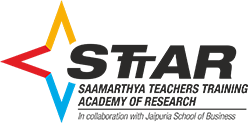A Teacher Training Program to Promote Gender Equality in Schools
 “Gender equality is not only a fundamental human right, but a necessary foundation for a peaceful, prosperous and sustainable world” – SDG 5
“Gender equality is not only a fundamental human right, but a necessary foundation for a peaceful, prosperous and sustainable world” – SDG 5
Discrimination of all kinds remains a challenging social issue. Gender inequality is one of the gravest kinds of discrimination which requires an urgent and timely response.
Women play a central and critical role in daily life. This has been captured by the United Nations Sustainable Development Goals, which set out targets that specifically recognize the inherent equality in the status of women and the need to empower it further. The deadline to meet these goals is 2030. Yet gender inequality continues to persist globally.
Education is one of the most powerful instruments in ushering a social change that promotes the rights of women. It cultivates views that influence societal changes and permeate into all aspects of human life. In fact, desired social changes in a society are very likely to be connected to the education structure they adhere to. The symbiotic relationship between the two is apparent. On one hand, society wields a strong influence towards the process of education, and on the other, education ecosystem changes according to the needs of the society. This interconnectedness between the two brings about the desired changes in the socio-economic situation of a society.
World over, there has been a growing need to tackle gender issues and discard the use of gendered terms that have perpetuated in the system and now seem to be a normal accepted norm. Gender bias appears to have strengthened its roots deep into our subconscious. Despite being aware of this social malaise, the bias continues to remain firmly entrenched in the way we work, interact, and communicate. Such unconscious biases have exacerbated the widening chasm of gender inequality in many societies across the world.
How does, then, one check one’s assumptions?
Since gender bias has subtly crept into all aspects of our lives, it is not an easy task to remove this deep-rooted societal prejudice. To expect all to think outside of the gender box based on a few gender awareness talks will not bear any positive outcomes. This matter needs to be addressed from early years of children. Teachers play a critical role in preventing gender stereotypes. Unfortunately, teachers often also unconsciously use gender lens in their regular curricular transactions in spite of having very good intentions for their students.
If teachers are well acquainted with the basics of anti-gender bias, they will be mindful of inculcating gender equality among their students right from early age when neural connections are forming.
As teachers are considered the cornerstone of an effective education system, they need to be constantly aware of their approach towards maintaining a stereotype-free environment during their classroom transactions by using gender inclusive language.
To expect a teacher to bring about transformations in human relationships and social institutions, it becomes imperative that they are sensitised and provided trainings to reduce gender bias. Training in gender equality should be introduced at all levels – in the teacher-education programmes like B.Ed., NTT etc., as preservice training and also later on in schools as in-service, and must not be missed at college level or university level.
Through well-planned training on gender bias and gender equality, teachers will be conscious of the following:
- Gender-neutral language in the classroom: It is important to use gender-neutral terms when referring to something that includes both men and women/girls and boys
- Ensure that educational materials/articles etc do not highlight gender stereotypes
- Refrain from using stereotypical characteristics that limit gender roles, for example: “boys are brave”, “- don’t cry”, “- are strong” etc; girls are “emotional”, “- delicate”, etc
- Strike out tasks that involve stereotyped gender roles
- Gender-focused pedagogy which encourages equal participation of boys and girls in teaching and learning process
Initially, these training can be organised on a standalone basis and can gradually be incorporated in other generic trainings that teachers undergo as part of their CPD programs. Since gender norms are embedded in the minds of children in their daily interactions with their family members, schools must orient parents towards gender bias as families are the primary agents of gender socialisation.
Gender sensitisation for all at all levels is the only remedy to bring about the desired social change towards promoting gender equality in society.
A changed mindset will definitely help shape the child’s attitude towards gender roles with teachers playing a significant role as “agents of change”.
Source:- Times of India
Link:- https://timesofindia.indiatimes.com/blogs/voices/a-teacher-training-program-to-promote-gender-equality-in-schools/
Published on:- 18th July 2022








